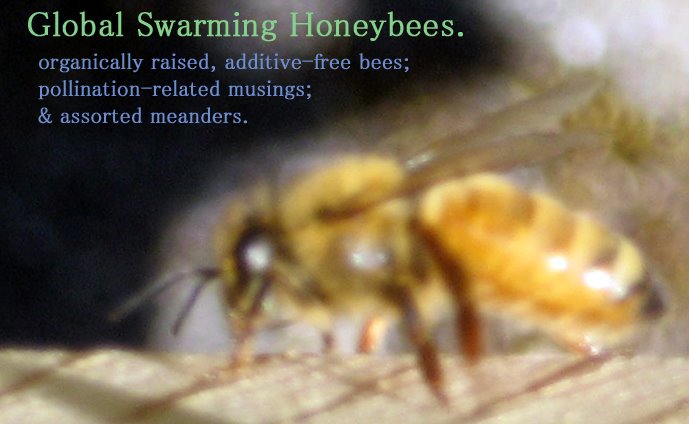Want to read a beyond-charming essay on honeybees? Look no further than 130 years back, to the great nature writer John Burroughs' extraordinary Locusts and Wild Honey. (This phrase may be familiar to the biblically inclined among you—the story goes that John the Baptist, in his poverty, fed on locusts and honey. Burroughs' title is a play on words, in celebration of the locust trees on whose blossoms the honeybee forage.)
Some samples:
The honeybee goes forth from the hive in spring like the dove from Noah's ark, and it is not till after many days that she brings back the olive leaf, which in this case is a pellet of golden pollen upon each hip, usually obtained from the alder or swamp willow.
***
It is the making of the wax that costs with the bee. As with the poet, the form, the receptacle, gives him more trouble than the sweet that fills it, though, to be sure, there is always more or less empty comb in both cases. The honey he can have for the gathering, but the wax he must make himself,—must evolve from his own inner consciousness.
***
I always feel that I have missed some good fortune if I am away from home when my bees swarm. What a delightful summer sound it is!
***
I love to see a swarm go off—if it is not mine, and, if mine must go, I want to be on hand to see the fun.
***
If you are not completely beguiled by now, there's no hope for you. But if you, like I, respond deeply to the 19th century charms of Burroughs' unabashedly enthusiastic bee-writings, check out this book. It's free on
Googlebooks; can be downloaded to the iPhone app, Stanza; and is no doubt available in other free online venues as well.
Of course, nothing is perfect in this world...and while I'm happy to have Burroughs' gem free for the taking from Google, I had to laugh when I got to this page:

Some folks in the library world have raised concerns that, in its haste to scan every publication under the sun, Google is sometimes sloppy in its scanning practices. Evidence for that argument (in the form of fingerprints, no less!) can certainly be found here. But I won't let that minor imperfection mar the honeyed sweetness of finding this lovely book (and other works by
John Burroughs) online, and being able to share these humble pleasures so easily with you.
And while we're on the subject, here's
Woodchuck Lodge in Roxbury, New York, where Burroughs was born and spent the summers of his adulthood studying nature, writing, and entertaining famous friends like
Henry Ford. Wren and I paid homage to Burroughs during our visit there last summer, and took this picture of his sweet spot on Mother Earth.

John Muir



























